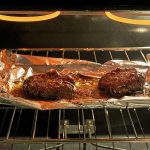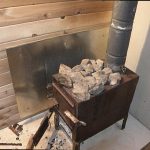In the age of quick bites and even quicker meal prep times, the microwave has become an indispensable ally in our culinary adventures. But amidst the whirlwind of frozen dinners and lightning-fast reheating, a question looms large: Can you really trust your elegant glass plates in the microwave’s buzzing, humming chamber of culinary wizardry?
This blog post dives into the heart of your kitchen’s battlefield, shedding light on the safety and nuances of microwaving with glass. We’ll keep things light and breezy, ditching the jargon to ensure you walk away with the know-how you need, crystal clear and worry-free.
Here’s what we’ll cover, served up on a plate of simplicity:
- Microwave-Safe Labels: Not all glass is created equal, and this label is your first clue.
- Thermal Shock: Understanding how sudden temperature changes can send your glassware to its doom.
- Type of Glass Matters: From borosilicate to tempered, knowing your glass can save the day.
- Testing for Safety: A quick DIY tip to check if your glassware is microwave-friendly.
- Precautions for Use: Handy pointers to keep your microwave meals safe and your glass in one piece.
Whether you’re reheating last night’s gourmet leftovers or just making a quick snack, ensuring your glassware’s compatibility with your microwave isn’t just about avoiding a messy cleanup—it’s about safety, efficiency, and preserving the integrity of both your food and your cookware.
Let’s demystify the do’s and don’ts together, ensuring your microwave adventures are both successful and safe.
Contents
Can you put the glass in the microwave?
Absolutely, you can microwave a glass plate, provided it bears the badge of being microwave safe. Typically, this assurance is found on the plate’s underside, promising a nod to safety. Yet, it’s crucial to wield this knowledge with care. Even plates anointed as safe for the microwave may buckle under the strain of sudden temperature shifts.
Beware, particularly, of glassware flaunting metallic glints, such as gold or silver edges. These are not comrades of the microwave, potentially wreaking havoc within.
Here’s a table to break it down:
| Thread Size | Material | Compatibility |
| Mostly, you’ll find them in 1/2 inch BSP (British Standard Pipe) threads. This size fits many, but not all, showers across the globe. | Durable materials like brass or copper not only last longer but also ensure a snug fit and efficient performance. | It must play nice with both your shower head and valve. Some brands like to go rogue, crafting threads that only match their lineup. |
| Length and Flexibility | Manufacturer Specifications | Professional Advice |
| While not affecting universality, these aspects can greatly influence user experience. Measure your space and movement needs. | Always peek at the manual. Some makers list specific compatibilities or warnings against mixing brands. | A chinwag with a plumber can save you a heap of trouble. They’ve seen it all and can guide you to a fitting choice. |
To microwaving aficionados, heed this guidance: the realm of glassware in your device is a friend, with caveats. Ensure there’s no metallic bravado on your glass plate, and shy away from piling them up in your microwave.
Though rays of microwaves can traverse many a barrier, not all glass responds the same under its gaze. Tempered glass or those heralding a “microwave-safe” seal are your best bets.
How microwave ovens work
Microwave ovens are marvels of culinary technology, transforming the way we heat our grub. They zap food with micro-waves, a type of radio wave, that gets those water molecules in the food jiving. This shimmy and shake produce heat, cooking or warming up the feast from the inside out.
Unlike traditional ovens that cook from the outside, these gadgets can dish up meals quicker and more uniformly, though they’re not without their quirks, like those pesky hot and cold spots. Hence, the turntable inside, spinning the dish for an even heat distribution.
| Component | Role | Effect on Food |
| Microwave Generator (Magnetron) | Produces micro-waves | Activates water molecules in food |
| Turntable | Rotates food | Ensures even cooking |
| Waveguide | Distributes micro-waves | Directs energy uniformly |
Remember, not all heroes wear capes, some just silently spin your dinner to perfection.
Some concerns with glass
Some concerns with glass dishes in microwaves revolve around the risk of thermal shock, uneven heating, and the potential presence of lead and other harmful substances in certain types of glassware.
| Thermal Shock | Occurs when glass experiences rapid temperature changes. This can lead to cracking or shattering, posing a risk of injury. | Prevention: Gradually warm glass dishes before microwaving. |
| Uneven Heating | Microwaves can heat unevenly, causing hotspots in glassware. This not only risks damage to the dish but also can lead to undercooked or overheated food. | Solution: Stir food and rotate the dish halfway through cooking. |
| Harmful Substances | Some glassware, especially older or decorative pieces, may contain lead or other harmful chemicals that could leach into food. | Advice: Use only microwave-safe glassware and avoid using antique or unknown origin glass dishes. |
Lucy Dearing’s expertise highlights the significance of understanding how glass interacts with heat. Her guidance on identifying oven-safe glassware and the emphasis on careful handling resonate strongly here.
Ensuring your glass dish is microwave-safe is crucial to avoid the risks mentioned. Moreover, Pyrex containers, known for their resistance to thermal shock, exemplify the safer options available for microwave cooking. Remembering to clean and maintain your glassware properly will extend its life and keep it safe for use in your culinary adventures.
Is Pyrex glass microwave safe?
Yes, Pyrex glass is a safe material for microwave use, provided it’s free from any metal adornments. Here’s the nitty-gritty to keep your kitchen adventures both joyful and secure:
Understanding Pyrex Glass:
Pyrex, fashioned from borosilicate glass, boasts a formidable resistance to thermal changes, making it a stalwart companion for your culinary exploits, be it in ovens or microwaves. This contrasts starkly with common glass, crafted from soda-lime, which easily succumbs to the rigours of rapid temperature shifts.
Guidelines for Microwave Safety:
Corning Inc., the steward of the Pyrex brand, assures us that their creations can bravely endure the microwave’s fervour, sans the peril of disintegration or deformation. This resilience stems from Pyrex’s ability to bear intense heat. Moreover, its sleek surface wards off the clinginess of food, simplifying your cleanup routine.
Yet, it’s wise to tread with caution. The annals of 2008 bear tales of Pyrex glass turning traitor, shattering post-microwave expeditions. This prompted a probe by Consumer Reports, unveiling that some Pyrex items had swapped their borosilicate heritage for tempered soda-lime glass, less adept at withstanding thermal shock.
Corning Inc. countered, affirming their allegiance to borosilicate glass, yet conceded that the marketplace might harbor soda-lime glass masquerading under the Pyrex moniker. Vigilance is key; inspect labels or packaging to ensure you’re getting the genuine, microwave-friendly article.
Table for Quick Reference:
| Material | Microwave Safe? | Notes |
| Borosilicate Pyrex | Yes | Resistant to thermal shock. |
| Tempered Soda-Lime Pyrex | No | Prone to shattering under extreme temperature changes. |
| Regular Soda-Lime Glass | No | Not suitable for rapid temperature changes. |
In essence, while Pyrex glass carries the torch of microwave safety high, ensure you’re wielding the right kind – borosilicate, that is. This vigilance guards against unwelcome surprises and upholds the sanctity of your delectable creations.
Injury risks when using microwave ovens
Using a glass plate in the microwave can cause injury through several mechanisms, primarily linked to the plate breaking or shattering. Here’s a deeper dive into the specifics:
- Thermal Stress: Glass plates can fracture due to thermal stress when they undergo rapid temperature changes. For instance, if a cold plate is heated too quickly, the outer edges expand faster than the center, creating stress that can cause the plate to crack or shatter.
- Uneven Heating and Age: Uneven heating or the cumulative effect of repeated microwave use can weaken the structure of the glass over time. Older plates or those subjected to repeated thermal cycling are more prone to breaking.
- Accidental Damage: Accidents, such as dropping or bumping the plate, can introduce micro-cracks. These weaken the glass, making it more susceptible to breaking under the heat stress of microwave use.
- Preventive Measures: To mitigate these risks, it’s advisable to use plates specifically labeled as microwave-safe. These are typically made from materials like borosilicate glass or tempered glass, which can withstand thermal stress better than regular glass.
Cautionary tips for using microwave ovens
When employing a microwave oven, particularly with glass plates, heed these advisories to dodge mishaps and ensure your culinary creations emerge unscathed:
Verify Microwave-Safe Status:
Not all glass plates are created equal. Ascertain the dish is labeled ‘microwave-safe.’ This ensures the glass can withstand microwave-induced thermal variations without cracking or exploding.
Examine for Defects:
Prior to usage, scrutinize your glassware for any signs of damage such as chips or cracks. Even minor flaws can lead to breakage under microwave conditions.
Avoid Extreme Temperature Changes:
Transitioning a glass plate from one temperature extreme to another can induce thermal shock. Allow dishes to adjust to room temperature before microwaving, especially if they have been in a cold environment.
Employ Coverings:
To prevent splatters and evenly heat your food, cover it with a microwave-safe lid or vented plastic wrap. This also avoids the risk of hot spots that could stress the glass.
Mind the Time:
Overheating can compromise glass integrity. Adhere to recommended heating durations and avoid using the microwave for prolonged cooking, especially with glass containers.
Uniform Heating:
To ensure even heat distribution, periodically pause and stir or rotate the food, preventing localized overheating that could affect the glassware.
Practical Table for Glass Plate Usage in Microwave Ovens:
Tips from USFDA

When microwaving glass plates, the USFDA advises to ensure they are fit for purpose, steering clear of potential hazards. Here’s a streamlined guide to doing it right:
Identification of Microwave-Safe Glassware
Ensure your glassware is explicitly labelled as ‘microwave-safe’. This tag is your first line of defence against unwanted kitchen experiments.
Avoiding Metal
Sidestep any glassware with metal accents or decorations. Metal in microwaves is a no-go, leading to sparks and possibly damaging your appliance.
Check for Damage
Inspect your microwave’s door and the glassware for any cracks, chips, or damage before use. This check helps prevent accidents, from minor to major.
Understanding Glass Types
Familiarise yourself with the type of glass. Tempered or specially designed microwave-safe glass (like borosilicate) is your ally in the kitchen, adept at handling heat without a fuss.
Handling with Care
Post-microwave handling is crucial. Use oven mitts or a thick towel to handle the glassware, as surfaces can reach scalding temperatures.
Adhering to these guidelines, you’ll navigate microwave use with glass plates safely, ensuring your culinary adventures stay enjoyable and incident-free. Remember, when in doubt, consult the user manual or reach out to the manufacturer.
General safety tips
To keep your microwave use both sage and efficient, follow these essential pointers:
- Read the User Manual: Each microwave boasts its unique quirks and features. Grasping the ins and outs of your particular model ensures you use it within its safety guidelines.
- Inspect the Door Seal: Keep an eye on the door seal for any signs of wear or damage. A compromised seal could mean unwanted microwave radiation sneaking out.
- Use Microwave-safe Containers: Not all containers are created equal. To dodge health risks from chemicals mingling with your meal, stick to microwave-safe vessels.
- Steer Clear of Metals: Metals and microwaves are foes. Introducing metals can spark a light show of sparks and potential fire hazards.
- Stir and Rotate: Halfway through cooking, give your food a good stir or a rotate. It’s not just about even cooking; it’s a defence against bacterial invasion.
- Handle with Care: Dishes straight out of the microwave can be deceptively hot. Arm yourself with oven mitts or a cloth to avoid a scalding surprise.
- Pierce Foods: Foods with snug skins or sealed exteriors need a quick jab before heating. It’s a simple step to prevent a messy or painful burst.
- Prevent Superheating: A wooden stir stick in your liquid gold can avert the drama of superheating. It encourages even heating and prevents unexpected eruptions.
- Stay Nearby: Keep vigil while your microwave works its magic, especially with new or unfamiliar foods. It’s the best way to quickly deal with any surprises.
- Clean Regularly: A clean microwave is a happy microwave. A simple mix of mild detergent and water keeps it humming efficiently and minimizes fire risks from old food remnants.
- Never Run Empty: An empty microwave is a recipe for disaster. Always have something inside, even if it’s just a container of water, to prevent energy buildup and potential damage.
Tips to microwave cold glass
To safely microwave cold glass and sidestep the dreaded shatter or crack, it’s all about gentleness and gradual change. Here’s how you can keep your cool and your glass intact:
- Verify Microwave-Safety: Not all glass wears its heart on its sleeve. Peek for a ‘microwave-safe’ badge of honor before you zap.
- Warm-Up Routine: Like a sprinter before the dash, let your glass acclimatize. A brief stint at room temp will do.
- The Power Play: Full throttle isn’t always a win. Embrace the slow dance of lower power settings, stretching the heating affair.
- Cover-Up: A microwave-safe lid or a dance of plastic wrap traps steam, coaxing an even warmth that’s kind to your glass.
- Lukewarm Prelude: An ice-cold glass in a scorching microwave is a tale of woe. A dip in lukewarm waters or a room temp rendezvous can rewrite this narrative.
- Step-by-Step Warmth: Escalate the heat gradually, teasing the temperature up, preventing the shock that spells disaster.
Conclusion
In the bustling world of kitchen convenience, the microwave stands as a beacon of efficiency. Yet, the question of whether your elegant glass plates can join the dance without crashing the party is a hot topic. This exploration into the microwave-safe realm reveals that not all glass is made the same, and knowledge is power. The key to a harmonious relationship between your glassware and the microwave lies in understanding and identifying microwave-safe labels, the type of glass, and the art of avoiding thermal shock.
Imagine your glass plate as a delicate dancer, gracefully navigating the heated rhythm of the microwave. The spotlight shines on tempered glass and those proudly bearing a “microwave-safe” badge, ready to twirl under the microwave’s glow without missing a beat. But beware, for not all performers are suited for this stage—glass with metallic glam is destined for a different path, one that doesn’t lead to the microwave.
The secret to a flawless performance? It’s not just about choosing the right glass; it’s about treating it with care. Avoid sudden temperature changes and don’t crowd the stage. Remember, the goal is a symphony of convenience and safety, where your glassware and microwave work in perfect harmony.





